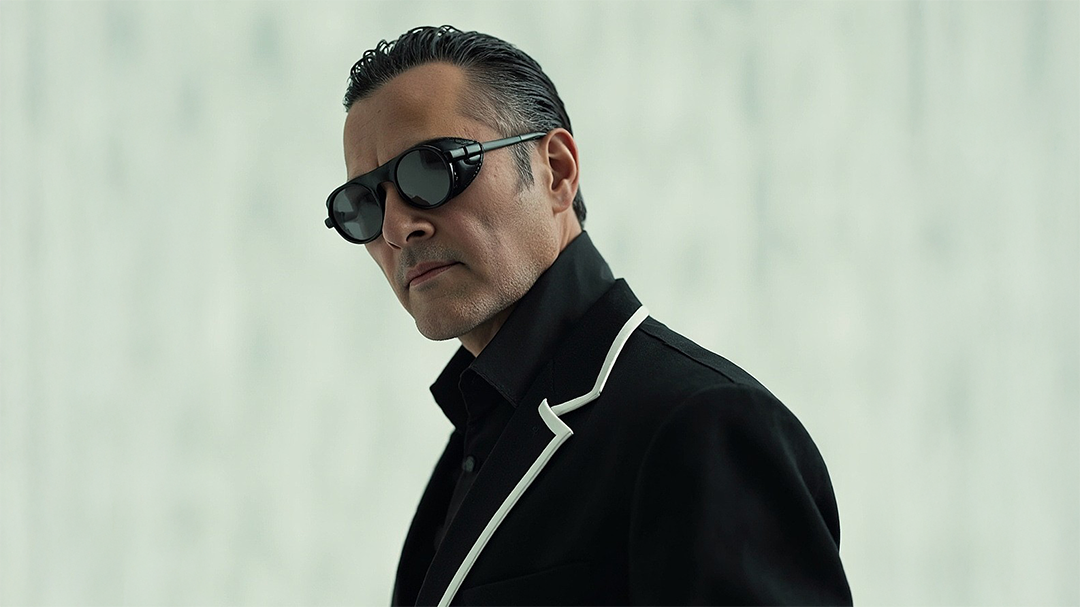
When you’re planning a trip to Tokyo, the countless travel recommendation lists are overwhelming. There are lists for shopping, lists for eating, lists for sightseeing… and not to mention, lists for otaku. But what does The Anime Man himself recommend? One of our staff members sat down with him and asked him what he thinks of being an anime fan in Tokyo and what any otaku visiting should try.
Tokyo Otaku Mode: Thank you for sitting for this interview with us. Let’s get started with a fairly simple question. When you think of anime based in Tokyo, what are some of the ones that come to mind?
The Anime Man: Immediately, I’m going to call myself out and pigeonhole myself in a certain generation of anime-watchers, but one that made me interested in going around a certain part of Tokyo was an anime called Durarara!!, based on a light novel by Narita Ryohgo. It was an amazing anime series based in Ikebukuro that I grew up watching. I would have my iPod on and I’d walk around, listening to the opening themes of the show while going to the very notable places like the highway that travels across east Ikebukuro. I’m like “oh, that’s where Celty rode her bike!” So that was really cool.
Another one that people will end up going to a lot is Shibuya. There are a lot of manga and anime that are based in Shibuya, but one that really stuck with me was a game called Persona 5, which also has an anime adaptation. It’s not set just in Shibuya, but a lot of it is, including certain train lines and buildings that actually exist. It’s fun to listen to that amazing soundtrack while walking around and pretending I’m the main character. The cool thing about Persona 5 is that it’s not just Shibuya, but all over Tokyo. There are certain parts where the characters go to Tsukishima and have monjayaki (a pan-fried batter-based dish that Tsukishima is famous for), Ogikubo to eat ramen, and Nakano to shop. Sangenjaya is the main hub for that series, even though it’s called Yongenjaya in the game (which I thought was a real place, but turned out it’s not).
Going outside the major areas of the city, one that was really memorable for me is this place called Hakonegasaki because it’s based on one of my favorite anime ever, Clannad. It’s on the outskirts of Tokyo prefecture, about an hour west of Shinjuku by train. It holds a special place for me because it’s one of the first real-life locations in anime I ever went to. Not only was an anime I freaking adore based there and the scenery is absolutely beautiful, but it also gave me an amazing glimpse into the non-city part of Tokyo that a lot of people who visit Japan don’t have the time or interest to go to see. Hakonegasaki was great for me because I’d never been anywhere close to that part of Tokyo before. That part of Japan has a kind of somber beauty that I never expected to see in Tokyo, so it made me appreciate the aspects of environments that are present within the prefecture. It was a lot of fun. It was very emotional for me to see a lot of those spots that were in Clannad because it was one of the few anime that made me cry like an absolute baby, so reliving that in real life and putting myself in that spot where a character I liked once stood was really cool as a fan and now is an unforgettable memory.
TOM: We get a lot of countryside shots in anime where you see a lot of scenery like the tea or rice farms, just fields of rolling green, and a lot of people don’t realize that you can see that in Tokyo. All you need to do is take the train out an hour or two.
TAM: Yeah, you don’t need to take the bullet train or a domestic flight to see these places. Tokyo is really interesting in that a lot of people forget that there are a lot of mountainous, countryside parts because when you think Tokyo, you think of a huge city with 30 million people where everything happens in this central hub. But actually, if you take the time to just venture out a little bit, especially out toward the west, then you’ll find some absolutely incredible scenery. Okutama is one of the places I absolutely love going to because it is so close to central Tokyo but it’s a completely different view. That juxtaposition of those two different environments in such a small place goes to show how small yet dense the country is with the variety of different places you can go to.
TOM: You mentioned that you’d walk around Ikebukuro with your headphones, listening to the Durarara!! soundtrack. Do any other memories stand out from your life when you think of experiences that are related to other Tokyo-based anime?
TAM: Tokyo is such a cool place for an anime fan. It might not have as many real-life locations from anime as outside of Tokyo, but because it’s a central hub you can find anything and everything related to anime and the subcultures surrounding it within a short space. The first time I discovered big anime stores and underground hidden stores that sell otaku merchandise was a revelation to me. It was like stumbling upon El Dorado or when you unlock a new map in a game. It made me feel like, “Why did no one tell me this existed? Now I have an entirely new area to explore that fits my needs!” Tokyo is the gift that keeps on giving when it comes to that. I’ve been here for 7-8 years and I still find new things to do in Tokyo, whether they’re anime-related or not. I’m still finding new stores for specific niches in otaku culture and I think Tokyo has everything surrounding that subculture.
TOM: If you could recreate a scene from an anime based in Tokyo, which one would you pick and why?
TAM: One that I haven’t yet done that I would like to eventually is the final staircase in Your Name. I think every Shinkai fan who comes to Tokyo is like, “Where is that staircase? I need to find that staircase. I need to bring along my friend and recreate that scene!” because it’s so pivotal and beautiful. I just haven’t had time to figure out which of the billions of staircases in Tokyo it is. It’s not a grandiose or touristy spot, but it’s something a little more subtle that does have the vibe of Japan and anime. I think that’s why it’s recreated so often by tourists because it’s easy to do and it’s instantly recognizable. If you can get the shot, it’s also a great photo, so win-win.
Tokyo Anime Spot Guidemap profiles locations from anime productions set in Tokyo.
Discover Tokyo anew as you navigate your way to “sacred sites” from the list of Japanese Anime 88-Spots (2023 Edition), a collection of real-life locations featured in anime productions. Visit the Guidemap website for more information here.


